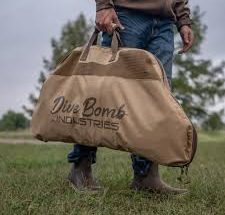In the industries that brave the frontiers of our world, fabric structures are witnessing a surge in popularity. These aren’t your average party tents – we’re talking about highly engineered, durable constructions designed to stand the test of time and elements. Especially in remote and challenging environments, where traditional brick-and-mortar approaches falter, these versatile solutions step in, demonstrating their value. Let’s dive into why these adaptable shelters are becoming essentials for trailblazing projects in the oil and gas sector and beyond.
Defining what Fabric Structures are
Imagine a building that’s as sturdy as it is transportable, capable of weathering storms yet quick to set up. This is the beauty of fabric structures, a kind of architecture that combines quality materials and modern engineering to create spaces that are practical and robust.
Using frames typically made of steel or aluminum covered with a tensioned fabric membrane, these structures boast an impressive balance of durability and flexibility that’s perfect for industries requiring agility and rapid deployment, from construction sites to military bases and mineral exploration.
Why Fabric Structures are a Fit for Inaccessible Areas
Accessibility is a considerable hurdle when it comes to remote or harsh environments. Traditional construction can be cumbersome, or even impossible, with heavy materials and a need for skilled manpower on site for extended periods.
Fabric buildings, however, present a different narrative. They are designed to be shipped compactly and assembled swiftly, often requiring minimal groundwork. This results in less environmental impact and a quicker path to operational status – key factors when the nearest hardware store might be hundreds of miles away.
How these Structures withstand Extreme Weather Conditions
The adaptability of these constructions isn’t limited to logistical convenience. Put a fabric structure in the midst of a snowstorm, torrid heat, or howling winds, and you’ll find it holds its ground admirably. Thanks to advancements in fabrics and coatings, they are UV-resistant, water-repellent and capable of withstanding significant snow and wind loads. Their resilience is evident in real-life installations, from research camps nestled on icy tundra to oilfields baking under the desert sun, where operations continue unfazed by the climate’s mood swings.
The Strategic Advantages of Portable Fabric Buildings
In the military or heavy industry sectors, circumstances can change at a moment’s notice, making the quick adaptability of these structures a game-changer. Their portability means that as project demands shift, the same shelter can be relocated, repurposed and reused without considerable loss in time or investment.
Stories abound of fabric buildings springing up as command centers, storage facilities, aircraft hangars, or living quarters, ready to be revamped for whatever mission comes next.
Exploring the Flexibility of Modular Fabric Buildings
One size does not fit all, and these clever shelters understand that. Modular by design, they offer the flexibility to create tailored spaces suited to the precise requirements of the site and its crew. Need an insulated dwelling in the Arctic? Or an open-air workshop in the tropics? Modular fabric buildings accommodate by allowing for the addition or subtraction of units, customized insulation, doors, windows and even HVAC systems. They embody the notion of building blocks, where the sum of the parts can be as unique as the project demands.
Summing Up
The tenacity of odd-job experts in remote areas bears testimony to the evolving approaches in construction and operations in the most demanding of conditions. From the high seas to the mountaintops, these ingenious fabric structures are emerging as the unsung heroes of progress, proving that no place is too far, too hard, or too isolated. As we continue to push the boundaries of what’s possible in these extreme locales, the role of these adaptable, resilient shelters is set to only grow, charting a course for success where the map ends.



